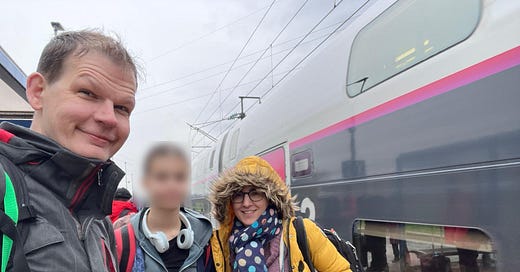Welcome to 2025! Over the past six months we have taken a total of 19 intercity trains across Europe. So we thought we would look at issues around train travel and air quality. We’ll look both at exposure to pollution for the traveller and at emissions or creation of pollution. We’ll also look at the specific challenges for people working at railway stations.
As for exposure, air pollution levels within overground trains are generally better than other types of public transport. For instance, underground trains have worse pollution levels the deeper they are underground, with those lines that appear above the surface bringing some respite from pollutants. And, unsurprisingly, electric trains are healthier for the traveller than diesel.
Rail transport shows some of the biggest decreases in emissions of pollutants such as nitrogen dioxide in this European study. However, road transport appears to have cut its contribution to particulate matter pollution more than rail. Sadly, the changes for aviation are almost all in the wrong direction.
Worker risk
Unfortunately, pollution levels within train stations can be very high, often depending on the design of the station and how enclosed it is. For most people, they will just pass through these highly polluted areas, but for people working on the railways, the risk is high. As well as prioritising electric trains, there are solutions for cleaning up the air in these locations such as that offered by Tech Air Solutions.
We need you!
Thank you to everyone who has completed our survey. We are keeping it open for a few more weeks and would love your feedback so we can continue to improve this blog!





